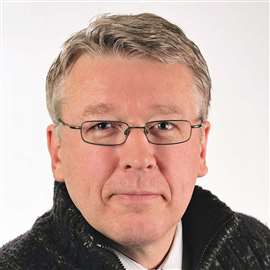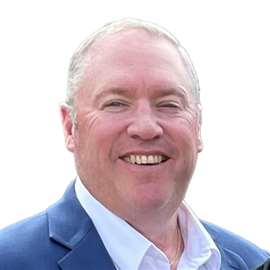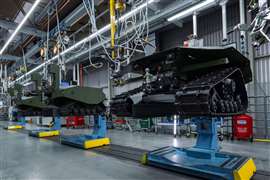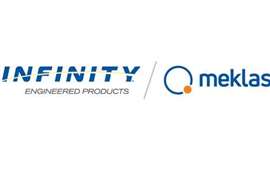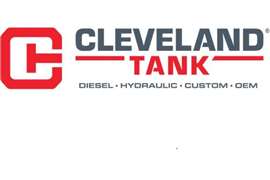Read this article in Français Deutsch Italiano Português Español
Caterpillar upgrades gas power solutions
13 December 2024
As the energy transition accelerates, gas-fuel power solutions offer a way for enterprises to reduce their greenhouse gas emissions across a broad range of applications. This is primarily due to their high energy efficiency, together with the ability to use a variety of low-carbon fuels.
Caterpillar has recently introduced a series of new additions to its lineup of gas generator sets. This includes an expanded portfolio of equipment capable of using gas/hydrogen blends and a 50 Hz option for the fast-response natural-gas gen sets, all of which feature new controls supporting the use of renewable fuels.
 Sven Buehler, Caterpillar
Sven Buehler, Caterpillar
These new solutions use gaseous fuels to help customers reduce their carbon output. This includes ultra-low NOx power solutions, including gen sets capable of operating on fuel with various levels of methane/natural gas, together with efficient combined heat and power (CHP) functionality.
“Across Europe, we’re seeing a consistent push for renewable energy, but performance is a critical consideration for our customers,” said Sven Buehler, senior product consultant for gas product sales at Caterpillar. “We’re finding that an approach that integrates multiple power technologies including traditional approaches, renewable energy and gas solutions ticks all the boxes for availability, reliability and sustainability.”
New hydrogen capabilities
Caterpillar has expanded its portfolio of power solutions capable of running on natural gas and hydrogen blends with the introduction of 12- and 16-cylinder versions of the Cat CG260. There are also aftermarket kits which can be installed on existing machines to support this fuel combination.
With these latest additions, Caterpillar now offers gas gen sets ranging in power from 400 kW to 4.5 MW, each with the capability of blending natural gas with up to 25% hydrogen (by volume). The gen sets feature numerous hardware changes and machine controls to accommodate the unique properties of hydrogen, such as low ignition energy, low energy density, a smaller quenching distance. Material incompatibilities have also been addressed.
“Across Europe, we’re seeing a consistent push for renewable energy, but performance is a critical consideration for our customers”
Sven Buehler, Caterpillar
In addition to the units capable of using fuel blends, Caterpillar has also introduced the Cat G3516 gas gen sets capable of operating on 100% hydrogen. First seen in 2022, they are available with a maximum rating of 1.5 MW for 50 Hz or 60 Hz continuous applications.
“As the energy transition continues to unfold, our customers with climate-related initiatives are eager to test hydrogen-fuel generator sets so they can understand where they make the most sense,” observed Steve Parente, Hydrogen Infrastructure and integration engineering specialist for Caterpillar.
Renewables in the field
These new machines leverage Caterpillar’s 35 years of experience working with hydrogen, including applications in transportation, oil & gas, industrial engines, turbines and fuel cells. For example, Caterpillar is leading a reduced carbon-intensity fuel project to demonstrate a 2.0 MW CHP system at District Energy St. Paul in Minnesota using hydrogen and natural gas.
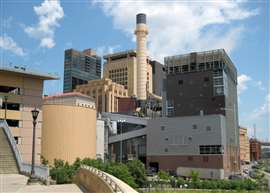
Supported in part by the US Department of Energy’s Office of Energy Efficiency and Renewable Energy, the demonstration at the city utility is led by Caterpillar in collaboration with the National Renewable Energy Laboratory (NREL).
The goal is to develop a hydrogen-fueled power delivery and control system to evaluate its greenhouse gas emissions profile, while also looking at reliability, durability and barriers to adoption. To fully assess every aspect of the hydrogen solution under real-world operating conditions, power and heat from the demonstration project are being fed into the utility’s existing distribution system.
This system delivers heat and steam to buildings around the city in a ‘steam loop’ and can deliver total energy efficiencies of up to 90%. It allows customers to save on energy spending while providing autonomy of supply and reducing emissions.
The demonstration also provides insights into changes that will be required for hydrogen-fueled power solutions in daily operations.
“The costs of production, transportation, storage, and numerous other factors are currently keeping hydrogen from achieving parity with traditional fuels,” Parente noted. “For example, our customers are learning that on-site production capabilities that leverage solar or wind power will be essential in the short term for economically supplying the green hydrogen that offers the greatest reduction in lifecycle greenhouse gases.”
Gen sets support renewables
As renewables play an increasingly significant role in supplying energy to the grid, enterprises are installing their own long-term power generation capabilities to address fluctuations in availability and pricing. For these customers, Caterpillar has introduced a line of standby natural-gas gen sets offering load acceptance and transient response for mission-critical and load management operations.
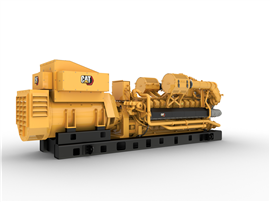 Cat G3520 Fast Response gas generator set (Photo: Caterpillar)
Cat G3520 Fast Response gas generator set (Photo: Caterpillar)
“Fast-response natural-gas generator sets are emerging as an excellent alternative to diesel gen sets in supplying bridging power,” Buehler explained. “In countries with unreliable power supplies, these gen sets can provide continuous power for longer periods than diesel.”
In August, Caterpillar introduced the Cat G3520 Fast Response natural-gas generator set for 50 Hz applications. The unit has been engineered for use in a range of high-power applications, including hospitals, data centers, retail complexes, schools, government buildings and universities.
The new gen set joins Caterpillar’s 60 Hz fast-response standby power nodes, which offer outputs ranging from 750 kW to 2.5 MW, as certified by the US Environmental Protection Agency for emergency and non-emergency applications
Controls are the key
While generator sets are the star performers in power generation, control equipment is equally vital in maximizing the performance of complex power solutions which combine multiple energy sources and grid interfaces.
 Cat ECS100 Electronic Control System (Photo: Caterpillar)
Cat ECS100 Electronic Control System (Photo: Caterpillar)
The new Cat Energy Control System (ECS) allows customers to manage their energy needs, whether from a single gen set or a full microgrid solution, optimizing for resiliency, emissions and cost.
With the capability to address both current and future regulatory and grid requirements, the Cat ECS portfolio utilizes a simple, scalable architecture which allows customers to layer additional functionality as their energy needs change. Additionally, built-in plug-and-play features facilitate the installation, commissioning and management of multiple power generation assets.
This article was written for Power Progress International by Sven Buhler, senior Product consultant, Caterpillar Electric Power. It originally appeared in the Q4 2024 magazine issue.
POWER SOURCING GUIDE
The trusted reference and buyer’s guide for 83 years
The original “desktop search engine,” guiding nearly 10,000 users in more than 90 countries it is the primary reference for specifications and details on all the components that go into engine systems.
Visit Now
STAY CONNECTED




Receive the information you need when you need it through our world-leading magazines, newsletters and daily briefings.
CONNECT WITH THE TEAM

